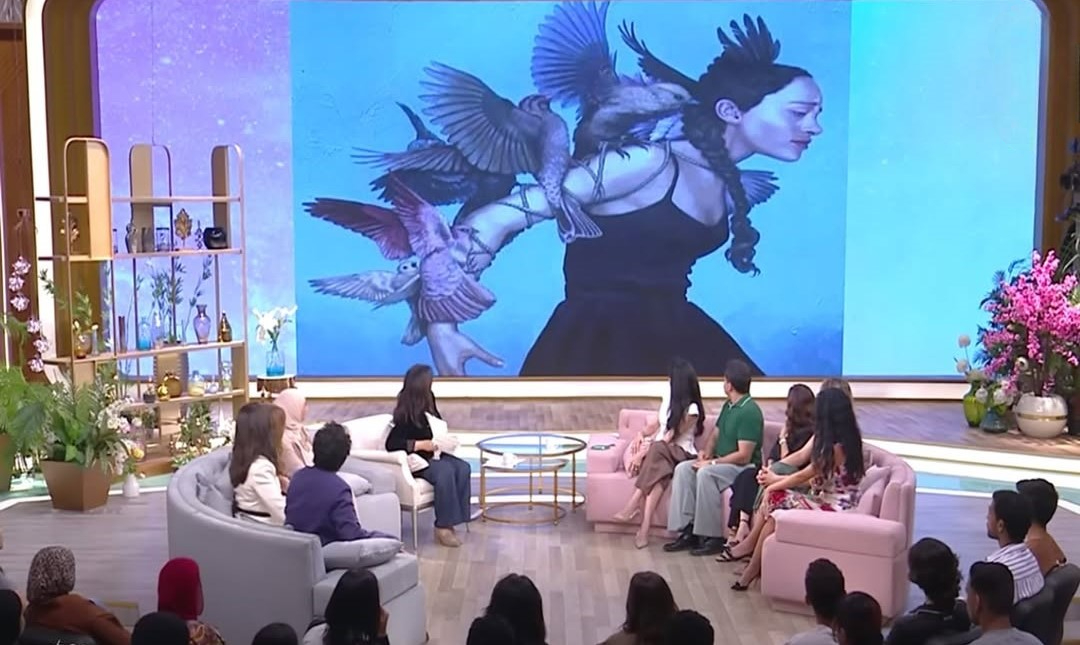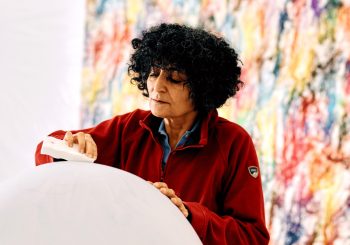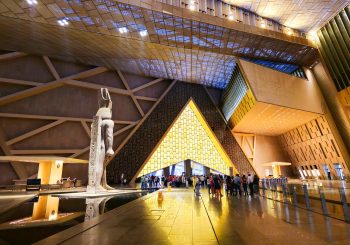What was meant to be a lighthearted TV segment in July 2025 quickly turned into a viral scandal. During an episode of Mona El-Shazly’s popular talk show, TV presenter and designer Maha Al-Sagheer showcased a collection of paintings, presenting them as her own work.
Within days, the story unraveled. Danish artist Lisa Lach-Nielsen recognized her 2019 piece Made Myself Some Wings on screen, still bearing her signature, and took to Instagram to call out what she described as blatant theft. She was not alone. Artists from Finland and France soon followed, pointing out their own works that had been presented on Egyptian national television under Al-Sagheer’s name.
The fallout was immediate. Screenshots spread across social media, international artists voiced their frustration, and Egyptian users joined the criticism, questioning how such a claim could go unchallenged on one of the country’s biggest talk shows.
For the artists involved, the issue went beyond copyright.
“Copying other people’s work is one thing, but taking a photo of the actual painting that someone else made, and taking public ownership of it, that’s new to me,” Lach-Nielsen wrote, emphasizing how artists depend on visibility to sustain their craft.
Finnish painter Caroline Wendelin echoed the sentiment, highlighting the financial and emotional weight behind her practice: “I’m not rich. I’m not famous. I work until I’m exhausted, all while raising three small children and pouring my whole heart into my art. So imagine what it feels like to see a wealthy influencer steal my art, claim it as her own, and present it on national TV as if it came from her hands.”
What makes this scandal resonate beyond one TV moment is what it calls into question about Egypt’s cultural climate. According to a 2023 British Council-commissioned study, creative professionals in Egypt frequently face fragmented institutional support, limited funding and opportunities. This combination discourages them from pursuing intellectual property protection and accessing formal platforms.
For local artists, these barriers are all too familiar. Egyptian painter Souad Abdelrasoul, in a 2018 interview with OH Gallery, described “the steep costs of pursuing art in Egypt, the lack of institutional backing, and how family responsibilities slow down women’s artistic careers.” Her experience reflects a broader reality: making art in Egypt often demands resilience against financial instability and structural neglect, with few guarantees of recognition.
Against this backdrop, the outrage over Al-Sagheer’s actions hits even harder. While independent artists struggle to gain visibility and protect their originality, a celebrity with influence was able to present plagiarized work on prime-time television without immediate challenge.
When influence can so easily eclipse originality, it raises uncomfortable questions about how creative labor is valued, and who gets to be celebrated. For Egypt’s artists, the scandal was not just about stolen paintings, but a reflection of the uneven stage on which their craft struggles to be seen.







Comments (0)